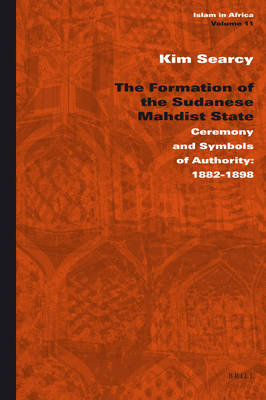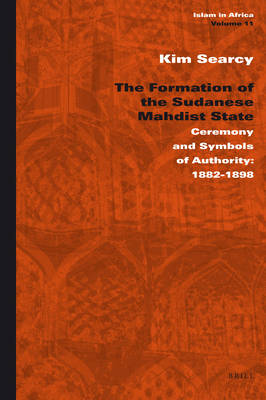
Je cadeautjes zeker op tijd in huis hebben voor de feestdagen? Kom langs in onze winkels en vind het perfecte geschenk!
- Afhalen na 1 uur in een winkel met voorraad
- Gratis thuislevering in België vanaf € 30
- Ruim aanbod met 7 miljoen producten
Je cadeautjes zeker op tijd in huis hebben voor de feestdagen? Kom langs in onze winkels en vind het perfecte geschenk!
- Afhalen na 1 uur in een winkel met voorraad
- Gratis thuislevering in België vanaf € 30
- Ruim aanbod met 7 miljoen producten
Zoeken
€ 206,45
+ 412 punten
Omschrijving
This book is the first analysis of the Sudanese Mahdiyya from a socio-political perspective that treats how relationships of authority were enunciated through symbol and ceremony. The book focuses on how the Mahdi and his second-in-command and ultimate successor, the Khalifa Abdallahi, used symbols, ceremony and ritual to articulate their power, authority and legitimacy first within the context of resistance to the imperial Turco-Egyptian forces that had been occupying the Nilotic Sudan since 1821, and then within the context of establishing an Islamic state. This study examines five key elements from a historical perspective: the importance of Islamic mysticism as manifested in Sufi brotherhoods in the articulation of power in the Sudan; ceremony as handmaids of power and legitimacy; charismatic leadership; the routinization of charisma and the formation of a religious state purportedly based upon the first Islamic community in the seventh century C.E.
Specificaties
Betrokkenen
- Auteur(s):
- Uitgeverij:
Inhoud
- Aantal bladzijden:
- 174
- Taal:
- Engels
- Reeks:
- Reeksnummer:
- nr. 11
Eigenschappen
- Productcode (EAN):
- 9789004185999
- Verschijningsdatum:
- 17/12/2010
- Uitvoering:
- Hardcover
- Formaat:
- Genaaid
- Afmetingen:
- 160 mm x 246 mm
- Gewicht:
- 340 g

Alleen bij Standaard Boekhandel
+ 412 punten op je klantenkaart van Standaard Boekhandel
Beoordelingen
We publiceren alleen reviews die voldoen aan de voorwaarden voor reviews. Bekijk onze voorwaarden voor reviews.









